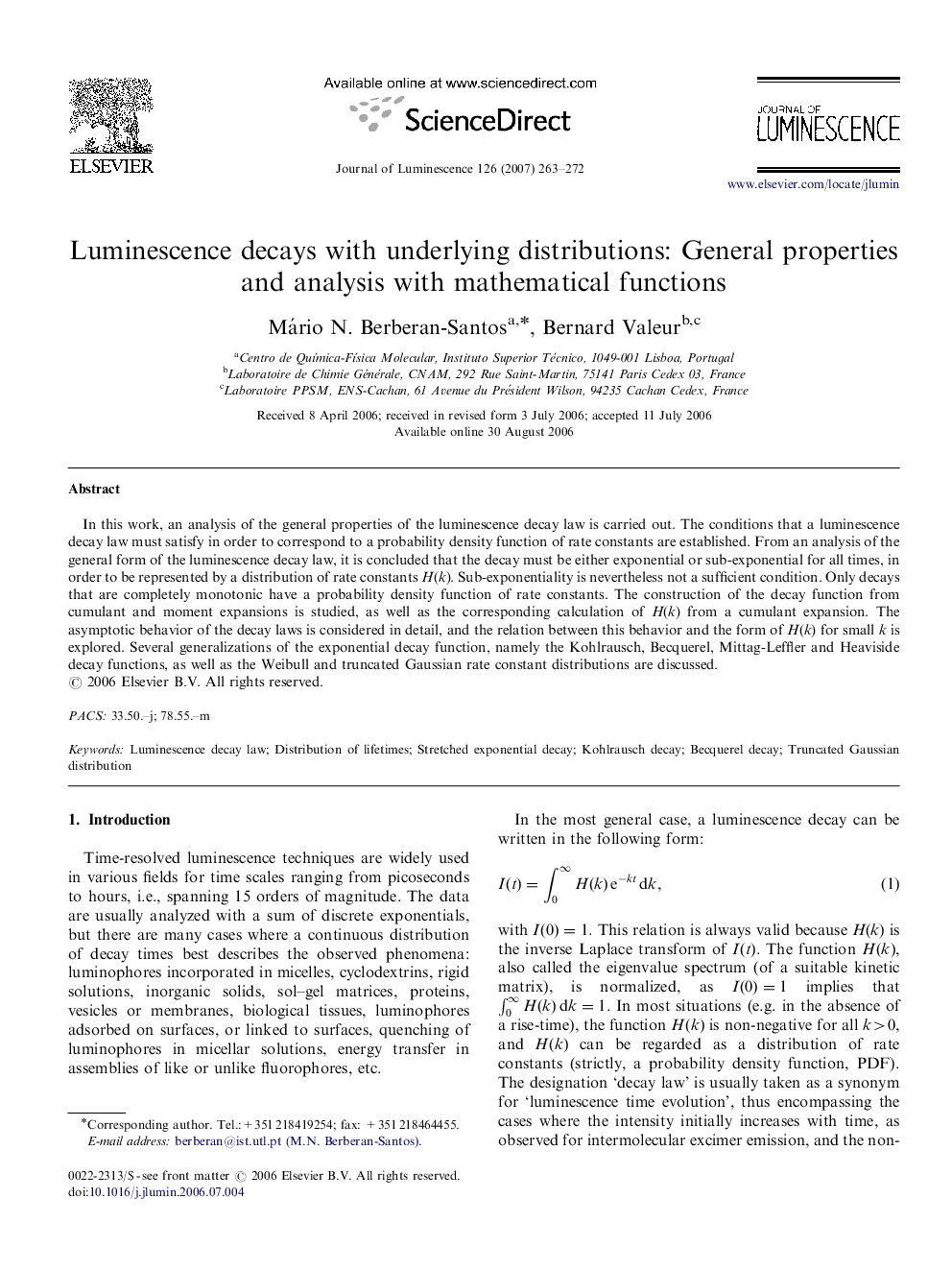| Article ID | Journal | Published Year | Pages | File Type |
|---|---|---|---|---|
| 5403323 | Journal of Luminescence | 2007 | 10 Pages |
Abstract
In this work, an analysis of the general properties of the luminescence decay law is carried out. The conditions that a luminescence decay law must satisfy in order to correspond to a probability density function of rate constants are established. From an analysis of the general form of the luminescence decay law, it is concluded that the decay must be either exponential or sub-exponential for all times, in order to be represented by a distribution of rate constants H(k). Sub-exponentiality is nevertheless not a sufficient condition. Only decays that are completely monotonic have a probability density function of rate constants. The construction of the decay function from cumulant and moment expansions is studied, as well as the corresponding calculation of H(k) from a cumulant expansion. The asymptotic behavior of the decay laws is considered in detail, and the relation between this behavior and the form of H(k) for small k is explored. Several generalizations of the exponential decay function, namely the Kohlrausch, Becquerel, Mittag-Leffler and Heaviside decay functions, as well as the Weibull and truncated Gaussian rate constant distributions are discussed.
Keywords
Related Topics
Physical Sciences and Engineering
Chemistry
Physical and Theoretical Chemistry
Authors
Mário N. Berberan-Santos, Bernard Valeur,
